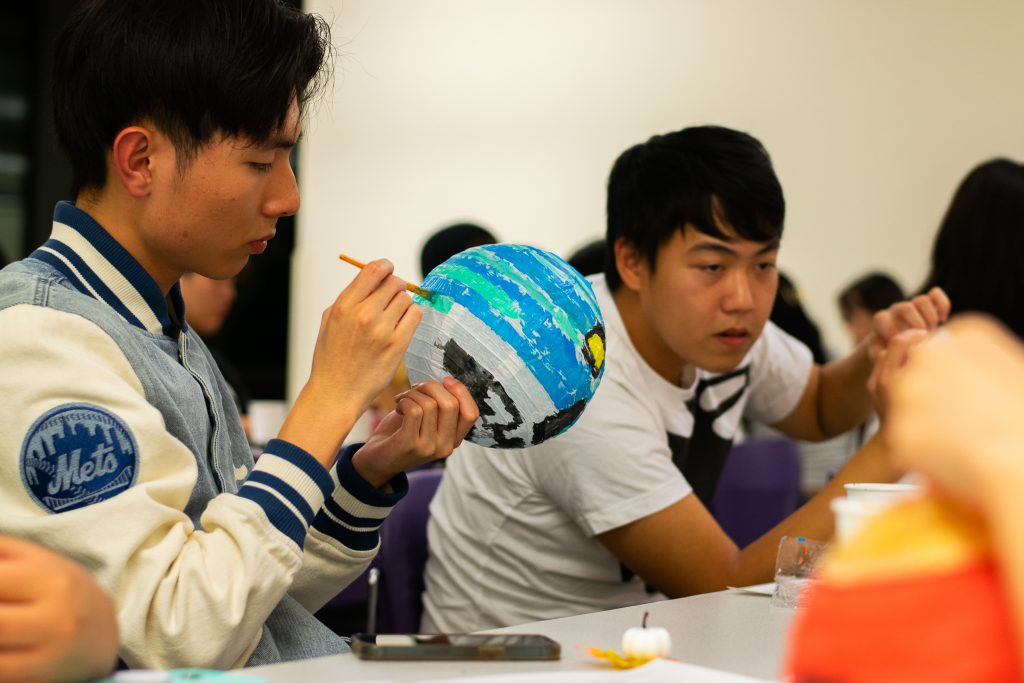The Society of Asian Scientists and Engineers, on Oct. 22, held its Autumn in Asia festival. The event included lanterns and pumpkin painting to celebrate the festival.
At the beginning of the event, SASE handed out snacks and mini Sol de Janeiro lotions. Attendees settled in front of newspaper-lined stations where the painting would take place. Once everyone was settled, the organization’s cultural chairs presented about different autumn festivals throughout Asia. Alyssa Lam, one of the cultural chairs and a junior majoring in biology, explained the significance behind the many versions of the festival.
“It originated in China, but then it spread all across Asia, and they all had their own take on it,” Lam said. “But the main part of it was really just to celebrate the harvest and then each country took that how they wanted to.”
In their presentation, the club delved into the American origins of decorating pumpkins and the significance of mooncakes and lanterns in Asian countries. At the end of the presentation, the cultural chairs displayed some inspirational pictures for painting lanterns and pumpkins. At this point, attendees came to the front to grab their paper lanterns and pick the colors they wanted to use to decorate.
“Part of the Mid-Autumn Festival is a lot of celebration toward the moon and the moon goddess,” Lam said. “We wanted to get the lanterns because they represent the full moon, which represents and symbolizes hope, prosperity and dispersion of darkness.”
Attendees were able to take creative freedom in their lantern and pumpkin painting. From depictions of cherry blossoms to the likeness of a human organ, there was no shortage of imaginative imagery.
While this event focused on the cultural aspects of SASE, the organization takes pride in being a combination of both cultural and professional endeavors. Rose Deutsch, one of the club’s senior advisors majoring in integrative neuroscience, described how SASE sets itself apart from other professional organizations on campus.
“We have a really good mixture of cultural, as well as professional [events],” Deutsch said. “Although we provide lots of networking opportunities, being that we are part of a national organization — we have hundreds of chapters in other states — we also have a good community here in Binghamton, which is more local, which provides a community and people who are like-minded to come, enjoy and celebrate or work on their professional skills.”



